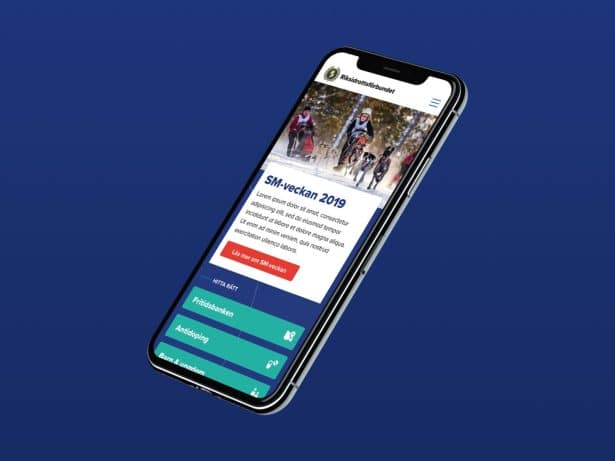In this article, we delve into how NPS works and how NPS evaluations can help your company gain better insights into what you excel at and what you can improve for your customers. Studies show that companies across all industries see higher revenues when they improve their Net Promoter Score.
NPS is also an important tool for acquiring new customers. Today, many potential customers look at previous reviews and ratings from other customers. Therefore, it is crucial to gain important insights into what your existing customers actually think about your company.
Research shows that there is a strong correlation between a company's NPS and customer loyalty. The brands we, as consumers, are loyal to, we are also more likely to recommend to our surroundings.
What is NPS?
Net Promoter Score (NPS) is a metric ranging from -100 to 100, designed to measure customer loyalty in a cost-effective and efficient way. Completing an NPS survey is quick, as it consists of only one question, resulting in a high participation rate from customers.
Step-by-step guide: NPS surveys
1. Formulate your question
The customer satisfaction survey consists of a single question, often phrased as follows:
"On a scale from 0 to 10, how likely are you to recommend our company/product/service to a friend or colleague?"
2. Combine the evaluation with open-ended responses
To improve NPS, it is important to understand why customers give the ratings they do. Therefore, it is common to follow up the NPS question with an open-ended field where customers are encouraged to justify their rating. If the question's heading is adjusted based on the rating given (e.g., "Tell us more about why you would not recommend [Organization]"), this can increase the number of collected open-ended responses.
By analyzing how detractors, passives, and promoters rate other questions, you can identify what in your offering has the highest correlation with your NPS. For example, you can learn how good or bad customer support affects NPS or how payment options impact customers' perception of the entire business.
3. Important considerations
To obtain an accurate NPS measurement, it is important to collect responses from a representative target group. Selectively choosing who receives the survey can skew the results.
Common mistakes include manual selection in the process or not distributing the survey through various channels (e.g., mobile, email, SMS). It is crucial to ensure that the NPS question is posed to the right people and that the response rate is carefully monitored.
Break down your NPS score
An overall NPS of, for example, +30 can be difficult to act on. By breaking down NPS by time, geography, or individual level, more insights can emerge. A company may have an overall NPS of +15, but +10 in Sweden, +15 in Norway, and +20 in Finland. In Sweden, the result may vary between different Customer Success Managers, where one CSM has -10, another +4, and a third +30. Analyzing the differences between various Customer Success Managers can also help identify specific areas for improvement.
Measuring NPS over time
It is common to measure NPS at different intervals. For example, a company may have an average NPS of +20 during the first quarter (Q1), with sub-results of +15 in January, +20 in February, and +25 in March. This assumes that the number of responses is evenly distributed each month; otherwise, the total result is weighted based on the number of responses.
When to measure NPS?
There are several occasions to measure NPS:
- Event-Based: The NPS survey is sent after a specific event, such as a purchase, completed support case, or during onboarding of a new customer.
- Recurring: Many organizations measure NPS semi-annually or annually to track trends over time and evaluate the impact of improvement measures.
- Ad-Hoc: NPS surveys can be conducted at any time to a specific customer group or when there is no established recurring process.
Each method has its pros and cons. Event-based surveys often have a high response rate because the interaction is fresh in memory. Recurring surveys help track long-term trends but can lead to survey fatigue among customers. Ad-hoc surveys are good for specific purposes but should not be used as the sole method for long-term NPS measurement.
By carefully choosing the timing and method for NPS measurements, companies can gain valuable insights to improve customer loyalty and the customer experience.
What is a good NPS score?
Respondents answer on a scale from 0 to 10, where 0 means "not at all likely" and 10 means "extremely likely."
Assessing what constitutes a good NPS score can be complex, especially when comparing different companies. While it would be ideal for all customer interactions to result in a 10, this is very rare. It is unrealistic to expect an NPS of 100.
How to calculate the NPS score?
If you have sent out an online survey with the NPS question, where the scale is 0-10, and received 100 responses from customers, can you take an average from the results? Not quite.
The NPS system calculates a percentage based on the collected responses and creates the following categories: detractors, passives, or promoters.
Here is the formula:
NPS = (percentage of promoters - percentage of detractors)
If you have received 100 responses, see the calculation example below:
- Detractors: 10 responses in the range 0-6
- Passives: 20 responses in the range 7-8
- Promoters: 70 responses in the range 9-10
The percentages for each group are 10%, 20%, and 70%, respectively. Subtract 10% (detractors) from 70% (promoters), and you get 60%. The Net Promoter Score is always expressed as an integer, not a percentage, so the NPS score is 60. (It is possible to have a negative NPS score, as it can range from -100 to +100.)
Follow these steps to calculate the percentage:
- Enter all survey responses into an Excel spreadsheet.
- Sort the responses into the categories of detractors, passives, and promoters.
- Sum the number of responses in each category.
- Calculate the percentage for each category by dividing the number of responses in each group by the total number of responses.
- Subtract the percentage of detractors from the percentage of promoters to get the NPS result.
Use HubSpot instead
Calculating your NPS score can seem complicated, as shown in the example above. One of the most effective tools is HubSpot, which makes life easier for you if you want to start implementing NPS surveys.
With HubSpot, you can easily and efficiently send NPS surveys and gain deeper insights into what your customers really think.
HubSpot is the obvious choice for sending your NPS surveys for many reasons
- High-level automation: Forget manual work. With HubSpot, you can automate the entire process from sending to collecting and analyzing responses. Save time and resources while getting high-quality data quickly and smoothly.
- Personalized messaging: No customer is the same. Increase the response rate on the open-ended question and get more relevant insights by speaking directly to your customers in a way that resonates with them.
- In-depth analysis and reporting: HubSpot offers powerful analysis tools that allow you to dive deep into your NPS results. Get detailed reports and visualizations that make it easy to understand what your customers think and identify areas for improvement.
- Integrated platform: HubSpot is more than just a tool for NPS surveys. It is a complete CRM platform that brings all your customer data into one place. Get a comprehensive view of your customer relationships and leverage insights to improve the entire customer journey.
- Increased customer loyalty and growth: By listening to your customers and acting on their feedback, you can create stronger relationships and increase customer loyalty. Satisfied customers stay longer, buy more, and recommend your company to others. HubSpot helps you maximize your growth potential.
- User-friendly: HubSpot is designed to be user-friendly, even for those who are not technical experts. With an intuitive interface and comprehensive support, it is easy to get started and get the most value from your NPS surveys.
Want to get started with NPS surveys?
Our packages are designed to provide you with the most valuable insights into your customers’ experiences and expectations.


